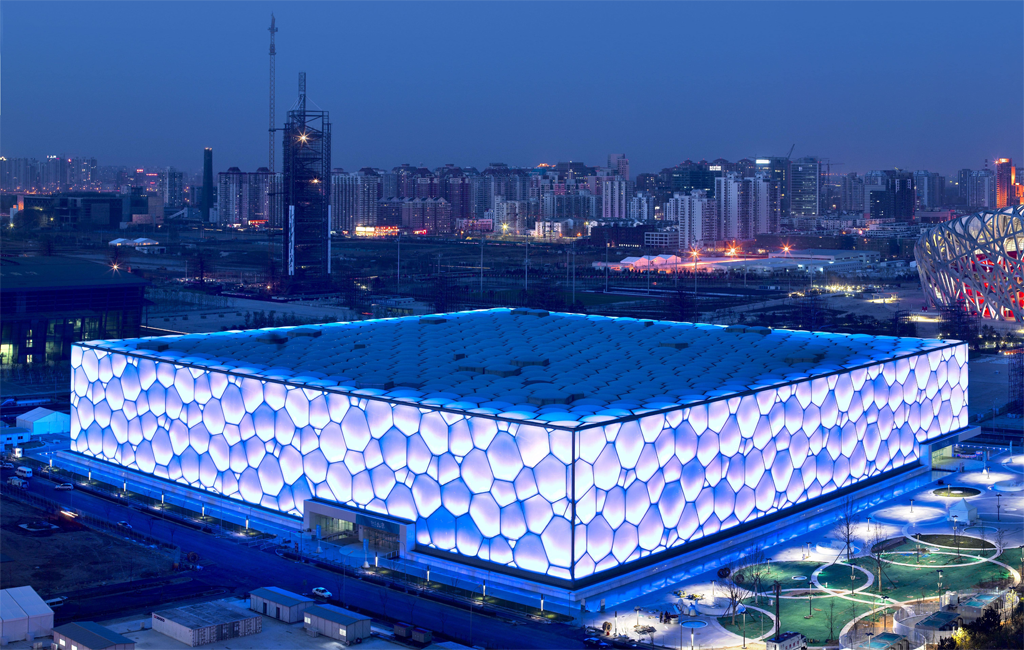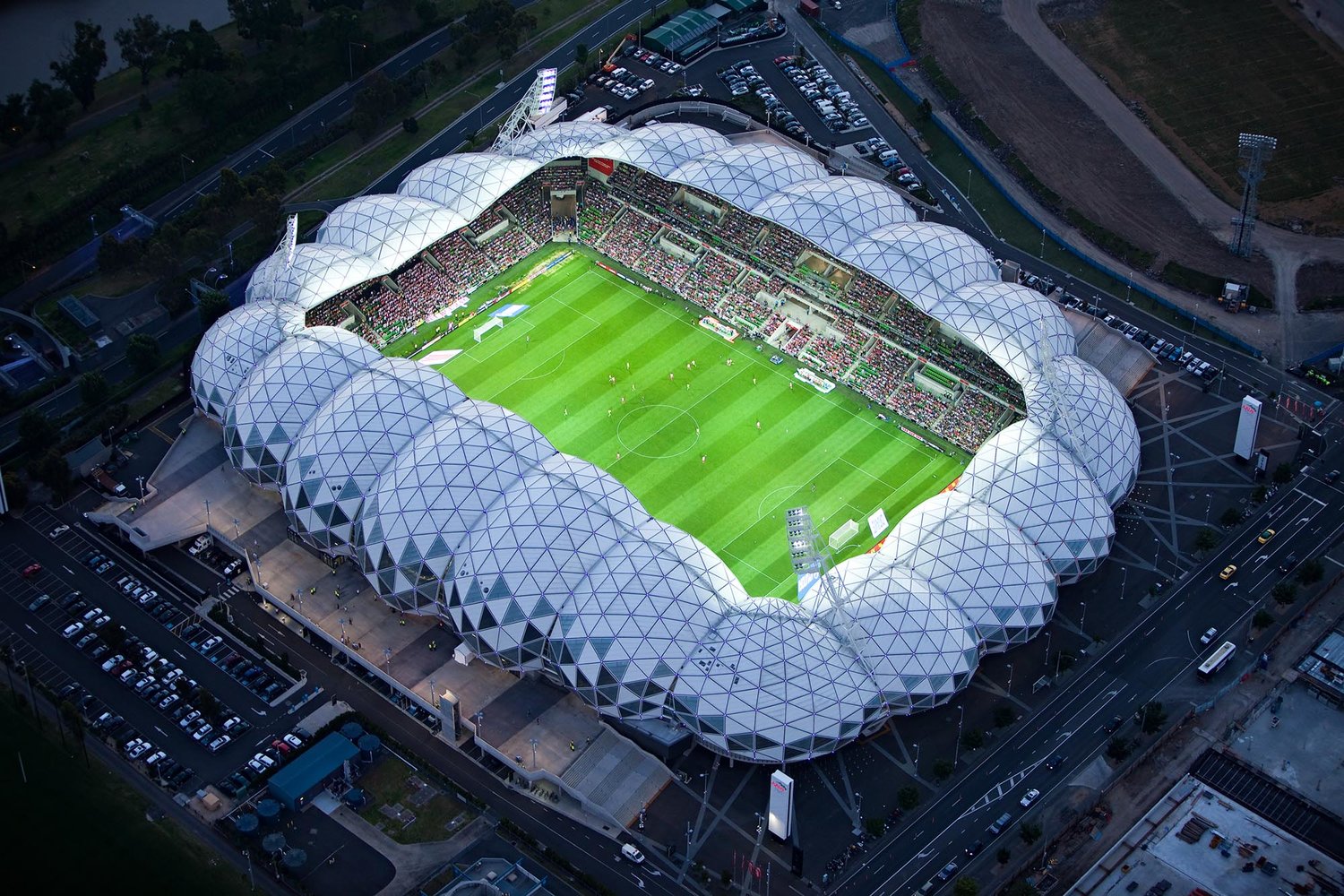Beijing National Aquatics Center

Behind the seemingly delicate form of the Beijing National Aquatics Center in China lies one of the most exciting and dramatic venues specially constructed for the 2008 Beijing Olympic Games.
Also known as the Water Cube, this 80,000-sqm aquatic center is nestled opposite the main stadium at the Olympic Green Precinct, the latter of which sitting at the northernmost end of Beijing’s north-south axis. Despite its fragile appearance, the Water Cube is ideally designed to fit the seismic conditions of Beijing, arguably hailing it as the most seismically-resistant building in the world.
Its unique and eye-catching design was inspired by the formation of soap bubbles in a 12- or 14-sided cell structure – eventually forming a plane of iridescent water droplets glistening in the sunlight.
Apart from being inspired by the geometry of soap bubbles, its seemingly simple cubic form is patterned after traditional Chinese culture as well as modern science and technology. Square was well-represented through Chinese history – which aside from being traditionally believed as the Earth’s shape, also reflected the social ethics in Chinese culture. These collectively hailed the square as the most basic form of ancient urban architecture in China.
An environmentally-friendly and energy-saving material known as Ethyl tetrafluoroethylene (ETFE) wraps the building’s exterior. Covering a total area of 100,000 square meters, it is hailed as the largest ETFE application project in the world.
The ETFE membrane materials weigh less than 1% of glass with around 20% of solar energy trapped and used for heating. Apart from its lightweight mass and thermal insulating capabilities, it also has an efficient, self-cleaning function – which prevents dust from staining the material. Ultimately, its rainwater recycling function collects rainwater into a central storage pool located below the building.
Taking a closer look at its ETFE façade lies is a strict geometry of 4,000 “bubbles” hiding behind a randomized appearance. Unlike traditional stadiums dominated by huge columns, beams, back spans, and cables, the Water Cube showcases an architectural façade, structure, and space with the same elements. This signaled carved interior spaces out of an undefined amalgamation of foam bubbles, symbolizing a natural condition heavily influenced by the culture of its locale.
- China
- PTW Architects
- http://www.ptw.com.au/ptw_project/watercube-national-swimming-centre/

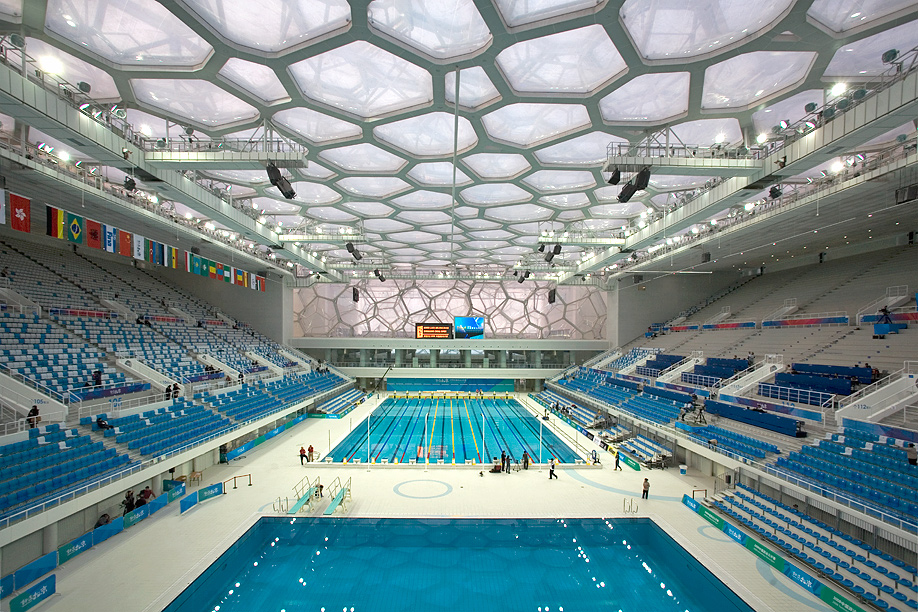
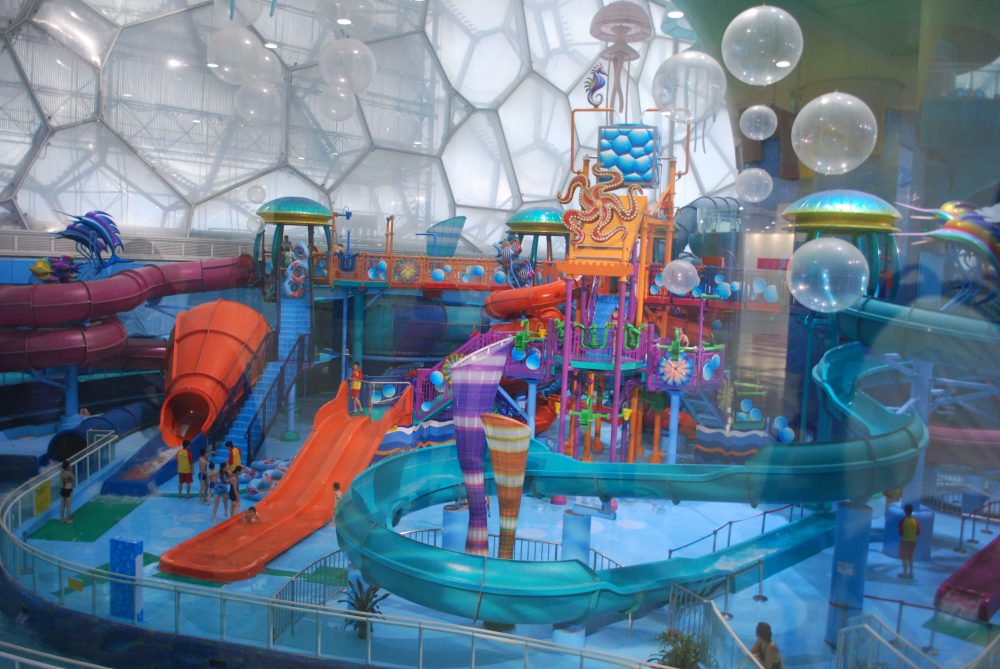

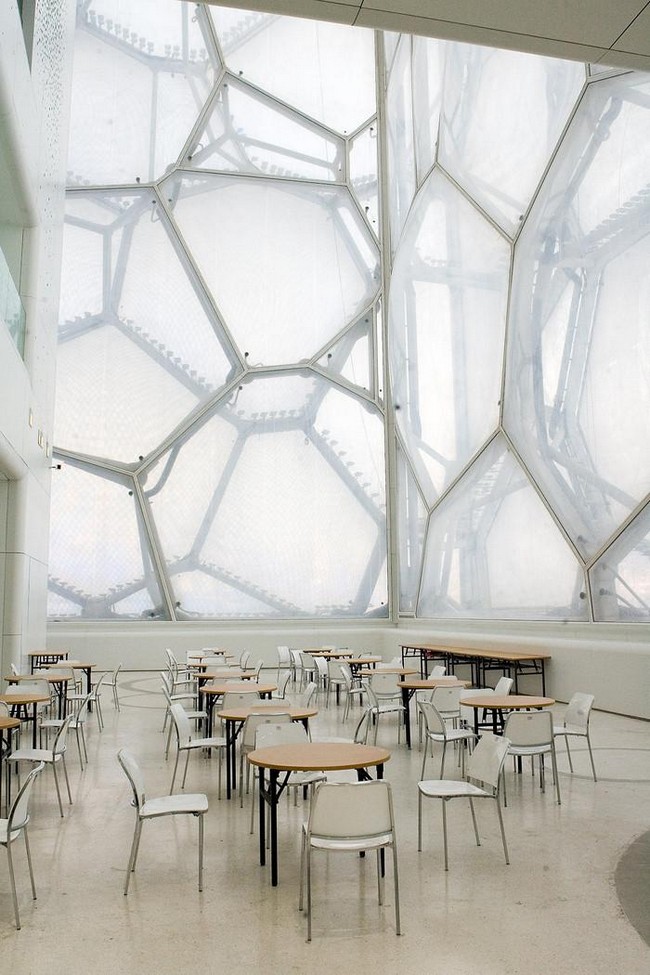
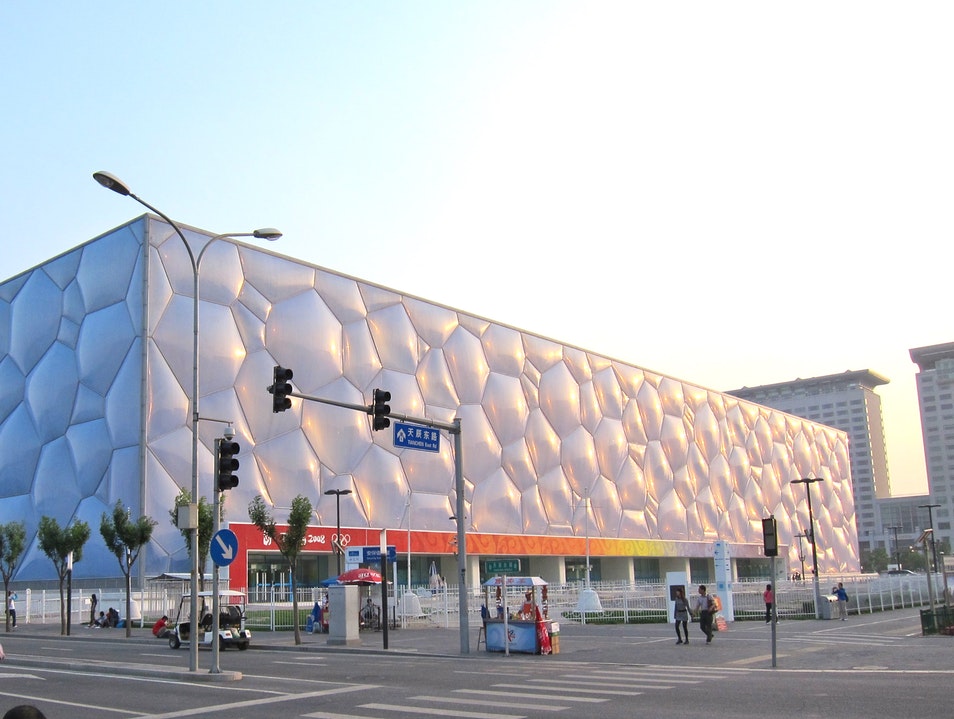
Category Sports
